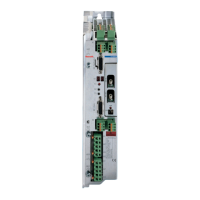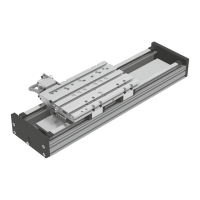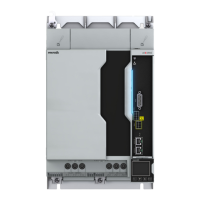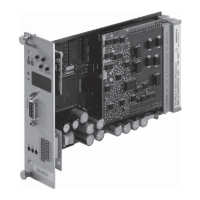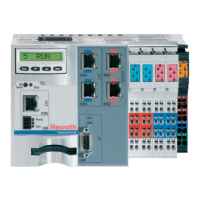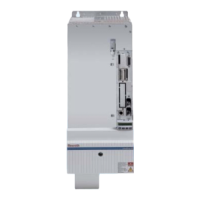ECODRIVE03-FL*-04VRS Functions 8-53
DOK-ECODR3-FL*-04VRS**-FK01-EN-P
8.12 Movement to Positive Stop
The assignment is to move a particular distance, within which a positive
stop is expected.
If the positive stop is reached within that distance, the torque defined in
the user program (refer to MOM command) is applied at the positive stop.
The torque, which should be valid until reaching the positive stop (during
movement of the carriage), is also defined in the user program. (refer to
MOM command)
If the positive stop is not reached within the programmed distance, the
movement is equal to the programmed distance. In this case, it is
possible to redirect the program flow into a user-defined error routine.
When the positive stop is reached, the position is held using the
programmed torque, until new motion is initiated using another travel
command.
If you only want to turn off the clamping, a POI command with travel
distance of zero can be used.
The movement to positive stop function is triggered by the commands
"PFA" and "PFI."
Remarks:
• When the command is initialized, the feedrate is set first.
(Requires approx. 80 ms.) Next, the logic is enabled for detecting the
positive stop. Then, finally, the positioning operation is started.
• The positive stop is recognized as soon as:
a) The current torque/force actual value >= torque/force limit value,
is (defined in the MOM command)
and
b) a drive movement occurs that is smaller than the standstill
window set in the PFA/PFI command.
Only one PFI/PFA command can be active at one time.
During an active movement to positive stop, the execution of any other
PFI/PFA command in a different program task is impeded until the
movement to positive stop is completed.
Further explanation can be found in the descriptions for the "MOM," "PFA"
and "PFI" commands.
For correct function standstill window must be lower than feedrate in
PFA/PFI command!

